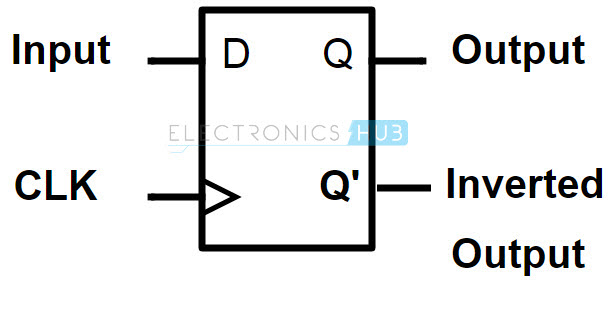Register:
- A register is a storage device capable of holding binary data.
- It is a temporary storage area.
- Flip-flop is a 1 bit memory cell which can be used for storing the digital data.
- To increase the storage capacity in terms of number of bits, we have to use a group of flip-flop. Such a group of flip-flop is known as a Register.
- A register is a set of flip-flops with combinational logic to implement state transitions that allow information to be stored and retrieved from them.
- The output is based on current input and previous output and change of state can happen at any time when its input change.
- To store N bits, a register must have N flip-flops, one for each bit to be stored.
- The input CLK comes from an AND gate that puts out the logical AND of the system clock and the LOAD signal.
- When LOAD is 0, the flip-flops are cut off from the input and do not change state in response to the input.
- The design calls for LOAD to be 1 for almost one clock pulse, so that the system clock and LOAD are both high for 1/2 clock cycle. At this time, the register is loaded.
Applications:
- It is used to interface digital systems
- It can be used as simple delay circuits.
- They can be used to convert serial data to parallel data commonly in microprocessor based system.
- It can be also used for multiplication by shifting left and division by shifting right.
Flip Flops:
- A flip-flop or latch is a circuit that has two stable states and can be used to store state information.
- The two stable states are High (logic 1) and Low (logic 0).
- These are a binary storage device because they can store binary data (0 or 1).
- Flip flops are also used to control the digital circuit’s functionality. They can change the operation of a digital circuit depending on the state.
- The output is based on current input and previous output and change of state will occur specific times depends on clock input.


